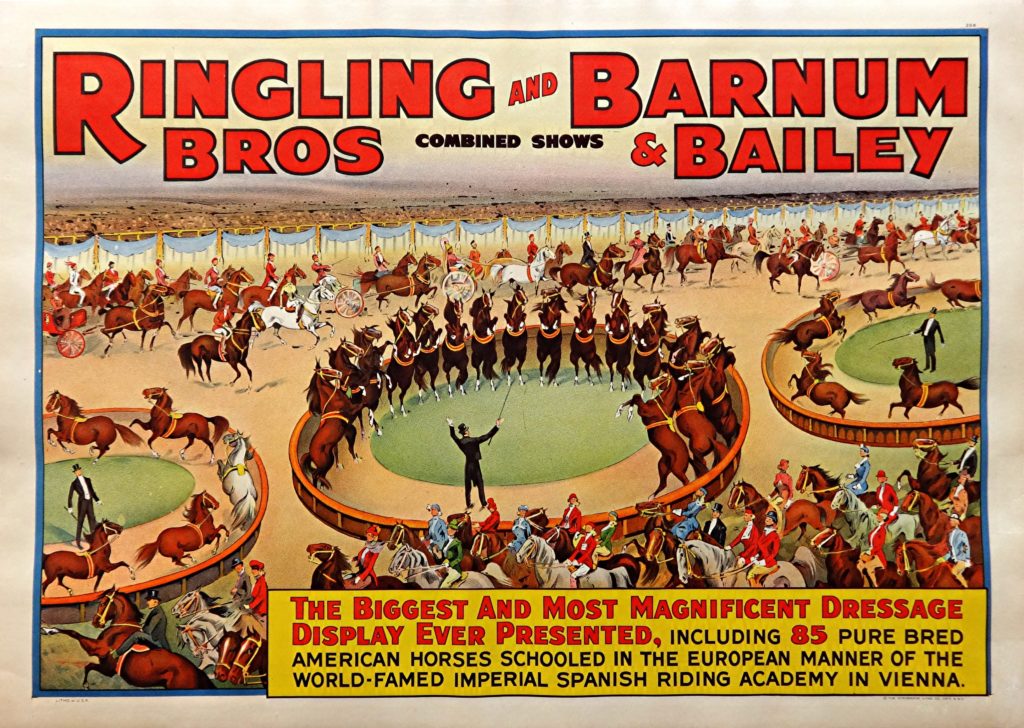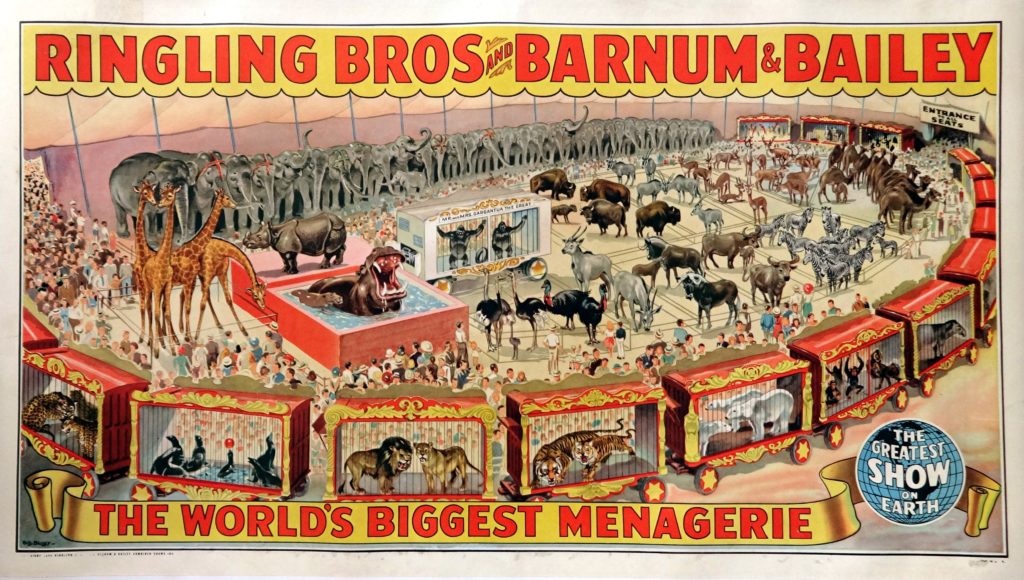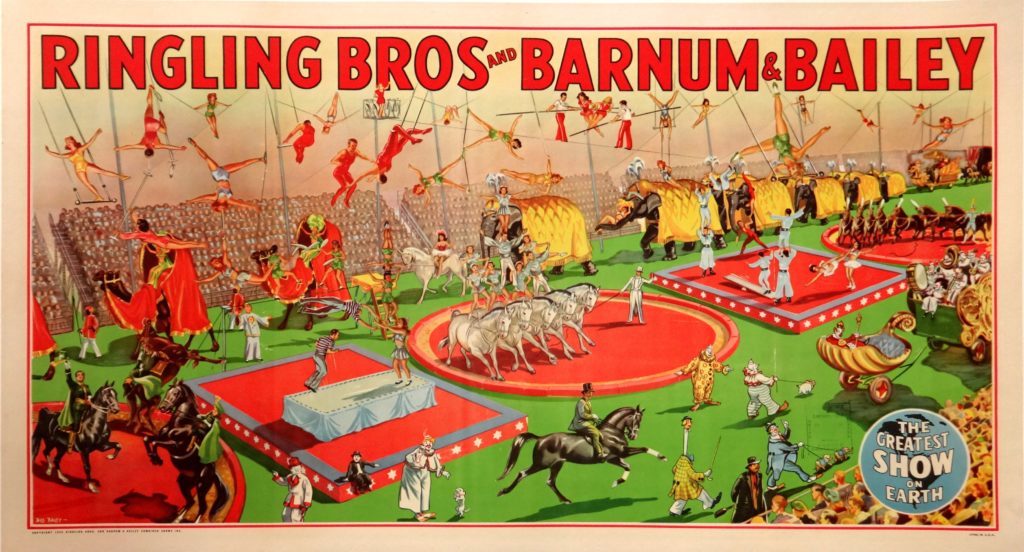A Farewell to the Circus – 100 years of Original Circus Posters
In April of 1793, John Bill Ricketts, a British trick rider, presented the first circus performance as we know it today. The history of the circus in America over the next 225 years is best told by the advertising “bills” or posters which were the single largest expense of any circus.

From its beginnings as letterpress printed bills, going back to the print shop of Ben Franklin, to their pinnacle in the lithographs produced by Strobridge, circus advertising lived by the credo that a picture was worth a thousand words. They soon found the more sensational the graphic and text, the better the crowds.

In an age of instant global images and information, it is almost impossible to imagine an agrarian nation centered on the homestead, where travel consisted of a trip to the nearest town or county seat and generations often lived their entire life within a few square miles. When the circus came to town – for one day only-it was much more than passing entertainment- it was the wonders of the world, real and imagined, coming to your front porch.
This was the era before radio, television, internet or social media and the poster and handbills were the mass media of the day. The artists, printers and advance crews were tasked with efficiently presenting the four “W’s”- Who- the name or brand such as Barnum and Bailey, What- the specialty act, performer or sheer size that set them apart from the competition, and the Where & When, the key information for young and old to set aside the resources as well as looking forward to the magical date on the calendar. Since this information changed with each day and town, it was often added as a date tag printed by letter press and attached to the bottom of the litho.
Lithography, or the process of making “lithos” was perfected by Alois Senefelder in the early 1800’s. Based on the principle of oil and water repelling each other, an image is hand drawn on a flat limestone block with a grease crayon. By using multiple stones, color printing accomplished the same revolution that Technicolor would bring to film in a later era. In France and Europe it was artists such as Cheret, Lautrec and Mucha who created the art form, in America it was the anonymous artisans of Strobridge, Enquirer and Erie printing companies that give us a glimpse to the golden age of the circus.

